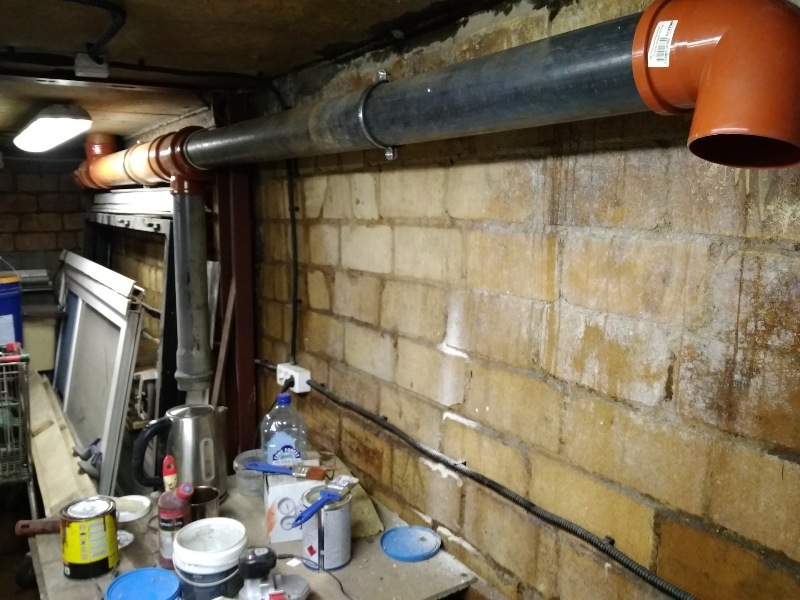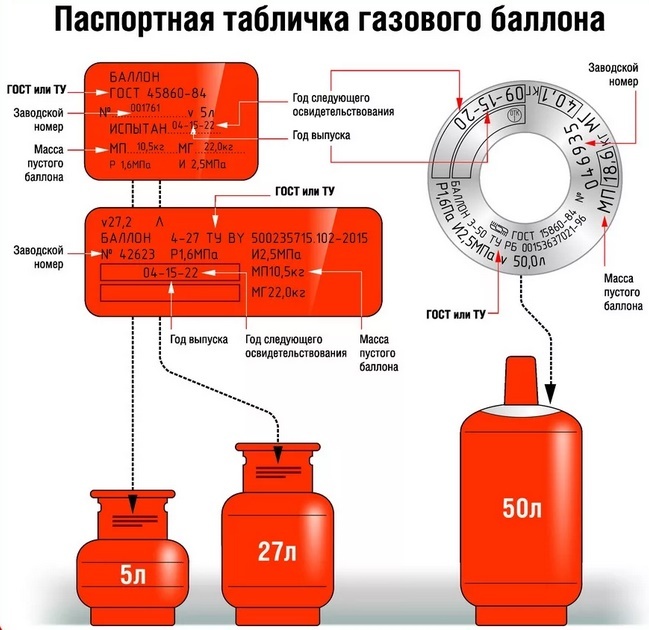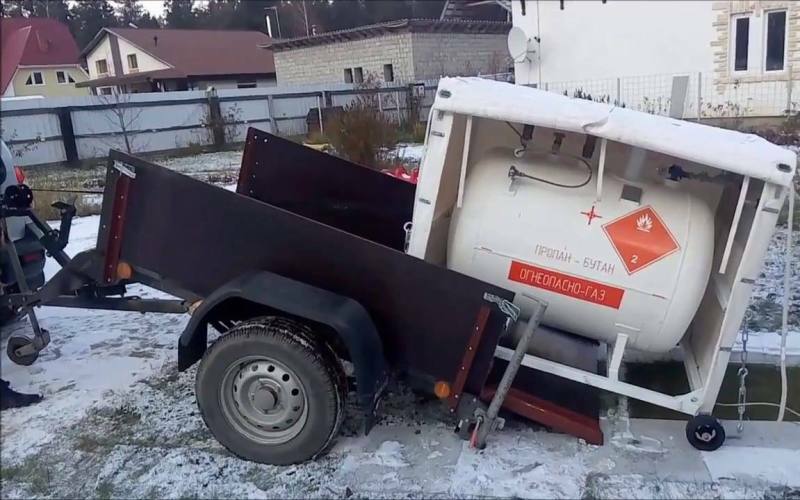Cylinders are universal equipment for storage and transport of gaseous substances in municipal and industrial purposes. The shut-off valves in them forever, so eventually require replacement of the valve on the gas cylinder. It is possible to produce on their own to meet a number of safety regulations.
We'll show you how to correctly pick up the valve for a gas cylinder equipment. For independent artists, we give detailed instructions on how to change the worn out fixtures. You will learn what precautions need to be observed during installation of the locking device on the tank with gas.
The content of the article:
- Components of gas cylinder
-
Types of apparatus and valves
- Classification of valves for cylinders
- gas valve device
- Necessary precautions
-
Guide unscrewing the valve
- Method 1: fastening straps bounding
- Method 2: welding the balloon to the metal base
- Screwing the new valves
- Leak testing and completion
- Conclusions and useful videos on the topic
Components of gas cylinder
The requirements for production processes and specifications of gas cylinders are regulated by GOST 949-73 quite old and 15860-84.
Maximum working pressure varies from device to 19,6MPa 1,6MPa, and the thickness may vary from 1.5 to 8.9 mm.

Protective cap for gas bottles can be wound on special thread of the neck, fully closing the valve, or be welded to the housing and a valve to protect against accidental external shock
Standard gas cylinder assembly is composed of the following elements:
- the cylinder housing.
- Valve with shut-off valve.
- Closing the valve cap.
- Washers for fixation and transportation.
- The support shoe.
An important element of the cylinder is also carved on its technical information.

Embossed on the container information using service centers during refueling and re-examination of the equipment, so it should not be much to paint over paint
The bottom of the cylinder has a hemispherical shape for uniform distribution of the internal pressure. For better stability of the casing shoe welded to the outside on the lower edges of the holes which are often for attaching the balloon to a horizontal surface.
With kinds of gas cylinders and the peculiarities of their labeling introduce articleWe recommend that you review and read.
Types of apparatus and valves
Carving in valves for gas cylinders is standardized, but they themselves can have a variety of designs. The choice of valve model affects the form of stored chemical production features of operation and the amount of money.
Before buying new equipment should be familiar with the embodiments of the device and an internal valve.
Classification of valves for cylinders
Structural features of the gas cylinder valve is not due to the whims of engineers and safety considerations.

Gas valve model VB-2. This model of the valve positively proved itself during the Soviet era. For decades, it is used in everyday life and industry, bringing a minimum of problems
Depending on the version of the material shut-off valve is divided into:
- brass;
- steel.
The choice of metal for the manufacture of the valve body caused views contained in the cylinder gases.
The following types of stopcocks, depending on the type of stored chemicals:
- Acetylene. The housing of such cylinders painted white. Special valves used in cylinders with acetylene, chlorine, ammonia and other aggressive agents.
- oxygen. Cylinders colored blue and are intended for storage of oxygen, argon, hydrogen, nitrogen, carbon dioxide and other inert gases.
- Propane-butane. Painted in red and are designed to store the respective name of the substance and other gaseous hydrocarbons. The most common model for this type of valve cylinder - WB-2.
Valves for acetylene cylinders are not made of brass because they contain substances can enter into a chemical reaction with copper. Typically, for the manufacture of valves of this type used a carbon or alloy steel.
gas valve device
Standard gas valve has the form of a tee fitting on each outer thread which is cut. More advanced models may have an additional projection - a safety valve. Its purpose - overpressure in case of heating under full cylinder or incorrectly carries the filling.
The lower valve fitting is used to connect to the gas cylinder, the top - for fixing the flywheel, and the side - to connect communications to exit and gas injection. Arranged for the gas cylinder valve is quite simple.
Valves typically consists of those common elements:
- Brass or steel housing.
- Sleeve valve or a flywheel joined to the union nut.
- Inside the locking mechanism and the valve stem.
- Gaskets.
- A cap for the outlet.
Details see valve device for gas bottles of each type can be represented on the images.
image gallery
Photo of

Descent of toxic gases through the relief valve can damage health even in an open space

The acetylenic valves maximum use of seals to poisonous gases do not fall out

Gaskets in such a valve must be made of pure rubber, because it is capable of reacting with oxygen

Seals on propane cylinders simply because they have to withstand a maximum pressure of only 16 atm

A valve with safety valve

The valve for the acetylene cylinder

Valve for oxygen cylinder

Valve for propane-butane cylinder
Worn valves can leak a small amount of gas, in enclosed spaces can lead to unforeseeable consequences. To prevent such situations is used to plug the side fitting, which serves to further seal the container during transport and long storage.
carving direction at the outlet depends on the chemicals that are contained in cylinders: right It is used for the non-flammable gases (oxygen, nitrogen, argon, etc.), and the left - for fuel (hydrogen, acetylene, propane, and etc)
The principle of operation of the gas valve assembled unremarkable. Gas supply and its overlap just slowly enough to turn the handwheel in the appropriate direction.
Necessary precautions
Before replacing the gas cylinder valve must use precautions. Must be carried out so as to protect people from potential hazards and keep the equipment in working condition.
The following precautions for the preparatory work on the gas valve replacement:
- Play off the remnants of the balloon content, you can only open space. An exception can be done only for nitrogen, air and argon.
- Operating room should be well ventilated, although it is desirable to carry out work on the street.
- Within the workstation must be only one closed gas cylinder.
- Loosen the flywheel must be slow in order to prevent his electrifying.
- By replacing the valve can begin only after the final equalization of pressure in the cylinder and out.
When screwing the valve into the balloon used fum tape or specialty lubricants which provide improved tightness and joint strength. When replacing such gaskets crane greatly complicate the process of its removal. To solve this problem, you can reheat valve hairdryer.

Save on gas fum-tape is not necessary, because the high-quality material eliminates the need to twist the valve due to gas leak
Heat shut-off valve only after venting gas from the container and closing the tap. In this case, the procedure is safe and does not lead to unpredictable situations.
An alternative can be a hair dryer vent wrapping cloth, followed by pouring boiling water over it. With such a heating method to the output connector should be screwed any suitable stopper to prevent the ingress of water there.
After all precautions and warm-up valves can begin to vent twisting that at home can be a daunting task.
If in addition to the replacement of the lock cylinder, you will need more and crane replacementMounted on the gas pipeline, it is advisable to study the procedure and rules for the implementation of this work.
Guide unscrewing the valve
An additional margin of tightness is not superfluous, but replacing the valves on the gas tank its fixing strength can become a big problem. The difficulty lies in the cylinder lock housing so that it is not turned when loosening the valve key.
It is against this problem and further incremental steps to replace the valves will be considered. Secure housing the gas cylinder can be a variety of ways, consider some of them.
Method 1: fastening straps bounding
Such tools will be needed and materials: tong, two bolt length of 20 mm with two nuts and a metal angled profile length not less than a meter. Instead corner you can use any other product which is not a pity to drill two small holes.
Further it is necessary to measure the distance between the two closest holes on the shoe cylinder and drill a hole corresponding to one edge of the metal profile. Thereafter, the iron bar to fasten to the container body by means of bolts and put it on its side. This design does not allow the balloon to scroll.
Then you need to put your foot on the metal profile and hand with a wrench, carefully unscrew the valve.
Stepwise fotoinstruktsiya process is presented below.
image gallery
Photo of

In the beginning you need to put the bottle on its side and make sure you have holes in the shoe

At the base of the shoe 50 liter gas cylinder typically has 4 holes

For attaching metal straps to the cylinder and fit the old rusty screws

Drill holes in the metal bracket should be maximally close to its edge

Fixing the metal bar clamp nuts enough hand pressure without using a key

you can use a regular wrench to loosen the valve, but the lever attached to it will be problematic

Increase the pressure on the key, slowly and smoothly so as not to damage the threads

The gas valve at the end of the process to unscrew hands faster, save a little time

Step 1: Prepare the container to the valve replacement

Step 2: Check the holes in the shoe cylinder

Step 3: Preparation of fasteners for assembly of the apparatus

Step 4: drilling holes in the metal strip

Step 5: Binding the metal strap to the cylinder

Step 6: Mounting the pipe wrench on the valve

Step 7: Untwisting valve with locking strap

Step 8: The final twisting of the valve arms
Method 2: welding the balloon to the metal base
This method is quite dangerous, so should be used only for professional welder with the utmost care. Shoe, we catch in two places so that you can easily disrupt the cylinder base after unscrewing the valve.
After welding fixture housing via gently unscrewed tong. Then, the internal thread of the cylinder to be cleaned sealant residues.
Fixing methods described embodiments are not limited to the gas cylinder. many alternative methods can be used to secure it. At the bottom of the container sometimes it collects water condensate liquid and thus eject the valve is required to turn over the vessel to escape therefrom could water.
Screwing the new valves
Before tightening the valve all mating parts should be degreased to prevent clogging of the locking mechanism. You can use a cloth with a conventional detergent or moistened with white spirit. After this, the surface should be rinsed with plain water and let them dry.
The new valve is never screwed to the cylinder on the bare thread. It is imperative to use the seal: a special thread compound or Teflon tape-fum. They are applied to the lower nipple and only thereafter spin valve.

Between the valve and the container body is not intended use of additional spacers is sufficiently seal and a corresponding clamping force
The thickness of the gas-feed fum greater sanitary and 0.1 - 0.25 mm, and its roll must be yellow. Tape wound under tension in 3-4 layers. Better once its kink at break than to make a loose seal.
Clamping valve desirable torque wrench. Steel check valves screwed with a maximum torque of 480 Nm, and brass - 250 Nm. After clamping the valve can pass to subsequent operations for testing the tightness of the resulting compound.
Leak testing and completion
When checking the tightness valve compound required to pump a gas cylinder pressurized gas.
This can be done in two ways:
- To pump gas via compressor equipment or vehicle pump.
- Connect the two cylinder hose, the first of which is empty (test), and the second - filled with a gas.
First you need to control a pressure gauge to fill the test tank with gas at a pressure of 1.5-2 atmospheres. After that, the compound is applied lather slightly ajar crane. If the bubbles are inflated nowhere, the connection is sealed. But if there are even slight swelling foam, you have to twist the valve again.

When immersed in water it is desirable valve closing side plug connector, so that the water contained therein and the suspended particles do not hit the locking mechanism
If the container is small, you can put him in the gate a small basin of water and look for bubbles.
After replacement of valves in the passport gas cylinders necessarily affixed corresponding mark.
It should be remembered that the techniques disclosed above replace your old valve only applicable to metal tanks. If you composite cylinder for storing gasSo you can not operate because of the potential damage to the flask and break its seal.
Conclusions and useful videos on the topic
Submitted videos allow to see firsthand all the details and difficulties in replacing the valve on the gas cylinders.
Video # 1. Screwing the valve on the gas cylinder:
Video # 2. Twisting of the new valve with an original way of fixing the gas cylinder:
Video # 3. How to replace the valve on the gas cylinder:
When carrying out the gas valve replacement does not need to hurry up and think about every subsequent action and its consequences.
Even with all the precautions described manipulation of the gas equipment are for the beginner is quite dangerous. It is best to entrust to carry out this work to professionals who produce them on a special stand.
If you are in the process of familiarization with article you have questions, ask them to be in the block, located below. Here you are able to leave comments and share useful information. Comment, please, the material, we are interested in your opinion.


